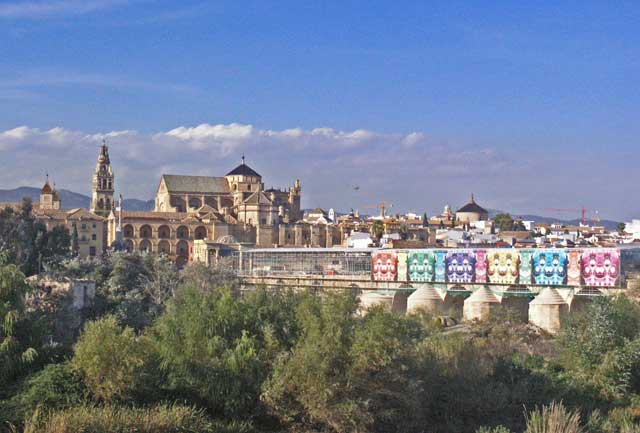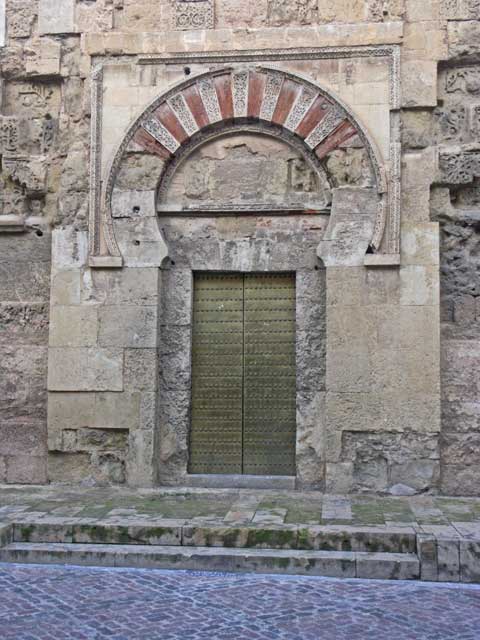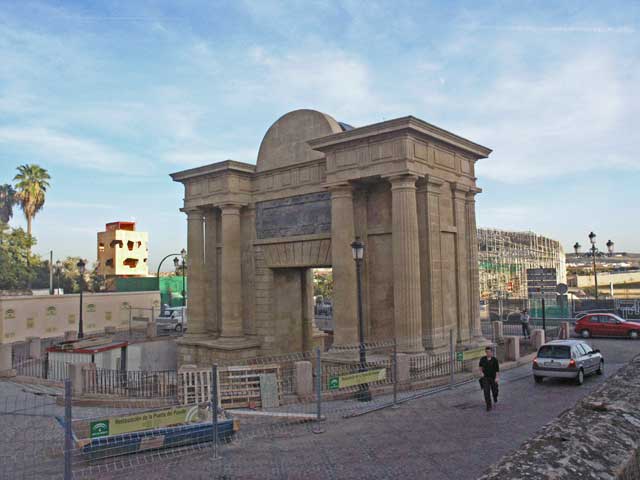
From our hotel, the Mezquita (cathedral) and Roman Bridge were within easy walking distance.

After a good nights sleep – with no GI disturbances – we got up and had breakfast at 0730 and got a chance to wish Deena and Harvey safe travels back to the Boston area. We’re pretty much packed up ready for our taxi to take us to the train station.
The taxi delivered us to the Sevilla train station in plenty of time, and we claimed a couple of seats in the waiting area. While I watched the bags, Jonathan used an ATM. When he got back, I did a circuit of the modern station. Noticing our track had been posted, I went by the entry to the platform and found no posting yet. A few minutes later, I checked again and found it had been posted, so we gathered our bags and boarded the train at 1130 for a noontime departure.
The train was one of the high speed trains, and our travel time to Córdoba was listed at 42 minutes. The train eased out of the station with one of the smoothest rides I’ve ever experienced. It didn’t take long to leave the industrial areas of Sevilla and get into the countryside. On the ride, the agricultural plain gave way to more rolling hills and signs of pasturage. Halfway there we spotted a promontory, complete with castle.
The train glided into Córdoba at the appointed time and we took a taxi to the hotel, which overlooked the Guadalquivir and the Mezquita, Alcázar, and the Roman Bridge (Puente Romano). After dropping our bags in the room, we came down to the hotel restaurant for lunch. We each ordered soup and sandwich, but the soup was so rich we really didn’t have room for the sandwiches we ordered. After that we took our siesta.
We left the hotel a bit after 1600 and walked north along the river to the Puente Romano, which was closed for restoration (a hazard of visiting in the off-season). We continued upstream to the next bridge, an elegant contemporary construction, and crossed. My goal was to find the Archeological Museum, but the twisting, narrow streets defeated this attempt. We ended up at the Mezquita, but did not go in as that was planned for the next day. We also walked by the Alcázar and through the San Basilio district to Puente San Rafael and the remnants of the city walls. We crossed the river again – where a sign proclaimed the temperature as 26°C (79°F) – using the bridge downstream from the Puente Romano. Strolling up the riverside we observed a shepherd tending his flock, then returned to the hotel.

One of the doors to the mosque showing the red and white horseshoe arch for which the building is known.

The Puerta del Puente anchored the Roman bridge at this side; the Torre de la Calahorra at the other.
The hotel advertised a rooftop bar (as did the previous hotel), but it was closed for the season although you could still wander around the roof for a few photographs. We did so and have now adjourned to the first floor (and open) bar to “do diary” and have a glass of wine. We’re still so full, we may opt for dessert and coffee rather than dinner.
